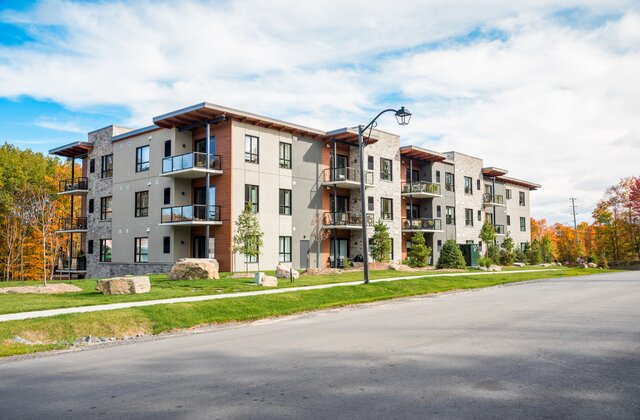Introduction
Negotiating commercial real estate leases can be a daunting task, but with the right knowledge and strategies, you can approach it with confidence. In this comprehensive guide, we will explore the intricacies of commercial real estate leases, from effective negotiation techniques to understanding key lease terms and best practices for successful lease management. By the end of this journey, you’ll be equipped to navigate the world of commercial real estate with confidence.
The Significance of Commercial Real Estate Leases
Before we dive into the details, let’s emphasize the significance of commercial real estate leases:
Commercial Real Estate Leases: These legally binding agreements outline the terms and conditions under which a commercial property is leased. They form the foundation of the relationship between landlords and tenants, specifying rights, responsibilities, and financial commitments.
1. Mastering Negotiation Techniques
Negotiating a commercial lease is an art that requires careful planning and effective techniques. Here’s how to approach it with confidence:
Understanding Tenant Needs
For landlords and tenants, grasping the unique needs of the business is crucial. This includes identifying the type of space required, the preferred location, and essential amenities.
Negotiating Lease Terms
Negotiation is where the lease agreement is forged. To negotiate with confidence:
- Stay Informed: Begin by gaining a comprehensive understanding of market conditions, including current rental rates and vacancy rates.
- Select the Right Lease Term: Determine the lease term that aligns with your business strategy, whether it’s a short-term lease for flexibility or a long-term lease for stability.
- Negotiate Rent Structure: Delve into the rent structure, which encompasses base rent, rent escalations, abatements, and incentives. This negotiation directly affects your financial commitments.
- Tenant Improvements: Discuss tenant improvement allowances and establish who will manage improvements or alterations to the space. This is particularly relevant for businesses requiring customization.
- Assignment and Subletting Rights: Clarify your rights regarding assignment and subletting, allowing for future adjustments based on business needs.
Image by: https://www.metrocommercial.com/
2. Unlocking Key Lease Terms
Once you’ve successfully negotiated a lease, it’s essential to unlock the key terms within the contract:
Rent and Escalations
These clauses define the financial aspect of the lease, specifying how much rent is to be paid, when it’s due, and any provisions for rent increases. Clarity regarding whether the lease is net or gross can significantly impact the tenant’s operating expenses.
Common Area Maintenance (CAM)
For properties featuring shared common areas such as hallways, lobbies, or parking lots, CAM charges come into play. It’s imperative to understand what these charges encompass and how they are calculated to avoid any surprises.
Use Clauses
Lease agreements often include use clauses that outline the permissible business activities within the leased space. An in-depth understanding of these clauses is crucial to avoid any conflicts or limitations.
Repairs and Maintenance
Lease terms outline the responsibilities for repairs and maintenance. Tenants must be aware of their obligations, as well as any responsibilities assigned to the landlord, to prevent unexpected costs.
Options to Renew
Many commercial leases provide options to renew at the end of the initial lease term. Familiarizing yourself with these clauses ensures that you can extend your lease under favorable conditions when the time comes.
Comparative Table: Key Lease Terms
To provide a clear overview, here’s a comparative table summarizing the key terms in commercial real estate leases:
| Lease Term | Description | Importance |
|---|---|---|
| Rent and Escalations | Specifies rent calculation and escalations. | Directly affects tenant’s financial commitments. |
| Common Area Maintenance | Addresses shared common area expenses. | Impacts additional costs for tenants in certain properties. |
| Use Clauses | Defines permissible business activities in the leased space. | Critical for ensuring compliance with lease terms. |
| Repairs and Maintenance | Outlines responsibilities for property upkeep. | Affects maintenance costs and the condition of the leased space. |
| Options to Renew | Provides conditions for lease renewal. | Influences the tenant’s ability to extend the lease on favorable terms. |
3. Best Practices for Lease Management
After the lease is signed, effective lease management is pivotal for maintaining a positive landlord-tenant relationship and ensuring the smooth operation of businesses:
Compliance
Compliance with all lease terms is paramount. This includes meeting your obligations, especially in areas related to rent payments and property maintenance.
Record-Keeping
Meticulous record-keeping of all communications and transactions related to the lease is essential. These records serve as a valuable resource in case of disputes or misunderstandings.
Open Communication
Establish and maintain open and transparent communication with your landlord or tenant. Address any issues, questions, or concerns promptly to prevent conflicts from escalating.
Lease Management Software
Consider employing lease management software to maintain organization and stay on top of important dates and obligations. These tools are instrumental in managing lease payments, renewal dates, and maintenance responsibilities effectively.
Conclusion
With the knowledge and confidence to negotiate effectively, understand key lease terms, and manage leases successfully, you can navigate the world of commercial real estate with assurance. Lease agreements are not just documents; they are the backbone of thriving businesses and collaborative landlord-tenant relationships. Whether you’re a landlord or a tenant, the art of negotiating and the science of understanding leases are the keys to success in the commercial real estate landscape.











